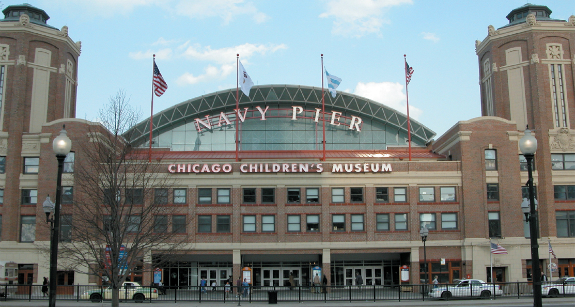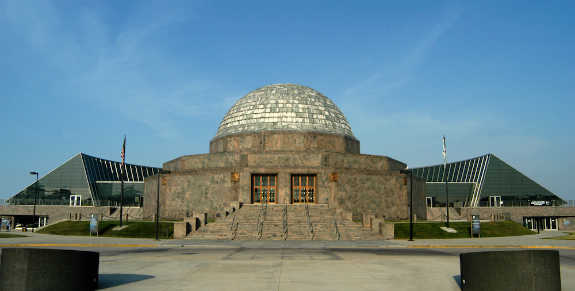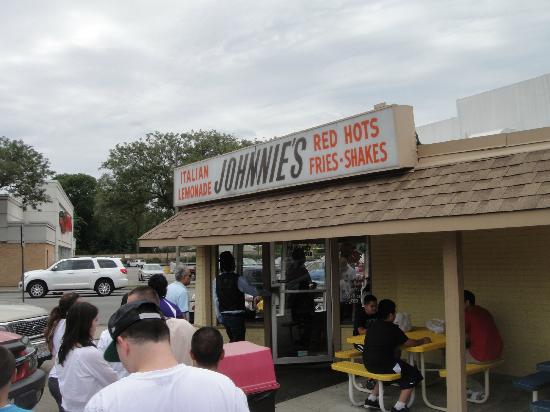There are no shortages of museums in Chicago. According to Trip Advisor there are 98 of them in fact. Locals who have spent their entire lives in Chicago will probably never make it to even half of them. So how the heck can you narrow the best Chicago museums? Our museum experts have picked the top destination from a handful of categories.
Chicago Art Museums
We’ll start with the easiest category. Hands down, the best art museum in the Windy City is the Art Institute of Chicago. To be honest, it is one of the best in the world. Trip Advisor has repeatedly lavished awards on it, such as Best Museum, and a Top Ten Traveler’s Choice Award. It is clear to see why. The museum features permanent collections that include the world’s masters, such as Monet, Da Vinci, Van Gogh, Manet, and Rembrandt, just to name a few. “American Gothic” makes its home here, and from ancient to contemporary, practically every school is represented. The Thorne Rooms are one unique feature of the Institute that entice both young and old. Perfectly to scale, these miniature rooms each reflect a different time period. Together, the Rooms constitute a dollhouse that is like no other. An interesting note, Illinois author Marianne Malone has written best-selling children’s fiction based on the Thorne Rooms. If you have little ones, have them read the book before their visit.
Runner up: And if for some reason you can’t get to the Art Institute, try the Museum of Contemporary Art. It too, is fantastic, and free tours are given daily. And we like free.
Website: http://www.artic.edu
Hours: Open daily 10:30am–5:00pm, Thursdays until 8:00pm
Cost: $25 adults, $19 students or seniors, FREE for Children under 14 and Illinois residents on Thursdays
Real Good News: The Art Institute of Chicago is included in the Chicago CityPass which saves you up to 53% off regular priced admission.
Chicago Science Museums

Source: Shedd Aquarium
If you’re a science lover, Chicago has much to offer in the way of museums. A place that really wows is the Shedd Aquarium. One of the largest inland aquariums in the world, the Shedd has over 30,000 animals—fresh water, marine, and even terrestrial. That means that in addition to getting an up-close view of sharks, sea lions, and octopi, you’ll also see some animals that dwell on the ground, like monkeys, frogs, and iguanas. The Aquarium offers all kinds of tours, from basic admission to small group “behind the scene” tours that are phenomenal. You’ll see where expert veterinarians and trainers care for our aquatic friends. And what care it is—the freshest of seafood from all over the world comes to Chicago to be served in the finest restaurants… and at the Shedd. But you can’t get it at the cafeteria. It’s for the aquarium’s permanent residents! You can however, enjoy some of Chicago’s finest Jazz here. Every Wednesday (begins June 22) in the summer “Jazzin’ at the Shedd” features popular Jazz artists, dinner, and cocktails on their spacious veranda, plus a great view of the fireworks that start at dusk. Before it gets dark though, take in the awesome architectural show that is the outside of the Shedd Aquarium.
Runner up: Another great science museum is in Chicago’s Hyde Park neighborhood, so if you are more for physics and trains than dolphins and coral, visit the Museum of Science & Industry instead – or heck, visit both!
Website: http://www.sheddaquarium.org
Hours: Open daily 9:00am–5:00pm, Weekends open until 6:00pm
Cost: There are so many ticketing options (group size, what do you want to see, buy in advance). The cheapest option starts at $37.95 for adults and $28.95 for children by purchasing tickets online.
Real Good News: The Art Institute of Chicago is included in the Chicago CityPass which saves you up to 53% off regular priced admission.
Chicago History Museums
Sharing a campus with the Shedd Aquarium and the Adler Planetarium is the Field Museum of Natural History. It is another Windy City Gem. You’ll marvel at colossal “Sue”, prominently displayed on its main floor. She is the most well-preserved and complete Tyrannosaurus Rex ever discovered. The children’s area, where the little ones can excavate finds of their own is a big draw. Through the museum’s partnership with University of Chicago Paleontologist Paul Sereno (once voted one of the world’s most beautiful people by People Magazine) the dinosaur exhibits are as fun as they are educational. The Museum frequently hosts temporary exhibits (a recent one on Haitian Voodoo was a real crowd-pleaser) that are as interesting as their permanent offerings. The Museum building itself is extraordinary—it is often rented for large affairs due to its beauty. Come in the warm months and you can have a lovely picnic on the adjoining lawn, fly a kite, or watch as children roll down the small hills at the front of the building.
Runner up: If you’re interested in cultural as opposed to natural history, you may want to visit the Chicago History Museum. Though it is quite a bit smaller, it’s chockfull of interesting facts on America’s Second City.
Website: https://www.fieldmuseum.org
Hours: Open daily 9:00am–5:00pm, except Christmas day. Last admission is 4pm.
Cost: Adults $38, students & seniors $32, Children (3-11) $26
Real Good News: The Art Institute of Chicago is included in the Chicago CityPass which saves you up to 53% off regular priced admission.
Chicago Children’s Museums

Source: Chicago Children’s Museum
As if Navy Pier weren’t enough of a playground, with its huge ferris wheel, funhouse, and stage, the Chicago Children’s Museum is housed on its second through fourth floors. While you might wish to take the stairs, tykes usually prefer to climb up through the burlap-netted maze. A family with young one’s could easily spend the whole day at this museum, which is completely hands-on. It features an extensive water exhibit (be sure to don one of the raincoats provided) as well as a miniature grocery store entirely manned by its short-in-stature visitors. In one room, glass boxes adorn the walls with games and toys of yesteryear that will have parents waxing nostalgic. There are also plenty of child-friendly dining and shopping options on the first floor of the Pier, from sit-down restaurants to McDonalds, and a great ice cream shop. Don’t miss the Build-a-Bear Workshop either.
Runner up: For those who like a less crowded, lower-key experience, The Kohl Children’s Museum in nearby Glenview is equally splendid.
Website: http://www.chicagochildrensmuseum.org
Hours: Open daily 9:00am–5:00pm, Thursdays open until 8:00pm
Cost: Children & Adults $14, Seniors $13, Children under 1yr old FREE. There are a variety of discounts and specials available. Make sure to visit their Plan your Visit page for details.
Free Chicago Museums
No way we can do this post without mentioning the best free museums in the city.
Chicago is a city whose large and thriving Mexican population is manifested in its food and art. The Pilsen neighborhood is the epicenter of this community. In it lies one of the largest collections of Mexican art in the country, at the National Museum of Mexican Art. With over 9,000 pieces housed in a spacious and modern facility, it’s a shock that this museum is free to the public. Yet since its inception in 1987, the Museum has remained true to its mission of bringing Mexican art and culture to the masses “sin fronteras” (without borders). In addition to the fine art that is part of the collection, you can also see a host of cultural and entertainment events here, from dance performances to speeches. Some say that the gift shop offers such unique and authentic wares that it is an exhibit itself. When you’re finished at the museum, be sure to stay in the neighborhood and enjoy delicious, reasonably priced Mexican food, along with some tequila or a margarita that will having you screaming for “uno mas”!
Runner up: If you can’t make it to the NMMA, the University of Chicago’s Oriental Museum is another outstanding free cultural venue that has the additional benefit of featuring an entombed body!
Website: http://www.nationalmuseumofmexicanart.org
Hours: Tuesday – Sunday 10:00am – 5:00pm. Closed Mondays and on major holidays.
Cost: Free!
Chicago Planetary & Observatory Museums

Source: Adler Planetarium
Ok, maybe we lied earlier – this is probably the easiest category to pick our favorite in because there is really only one!
If you want to stare into space from Chicago, head straight for the Adler Planetarium, where the “star” is the Doane Observatory. Here, the telescope allows viewers to see planets that are trillions of miles away. Visitor’s come to experience this as well as the phenomenal IMAX theater at the planetarium, which also presents some thrilling footage of the universe. Another draw of the Adler Planetarium is its extensive collection. From scientific instruments of historical significance, to paintings, photographs, and books, even the most advanced researchers will not be disappointed. For those who can’t get to the Adler, neighboring Evanston has a formidable competitor. Northwestern University’s Dearborn Observatory has an 18.5 inch refracting telescope that is open to the public.
Website: http://www.adlerplanetarium.org
Hours: Open daily 9:30am–4:00pm, weekends open until 4:30pm
Cost: General admission for adults start at $12 and $8 for children. (Note: these prices do not include any shows which are pretty cool)
Real Good News: The Art Institute of Chicago is included in the Chicago CityPass which saves you up to 53% off regular priced admission.
Chicago Specialty Museums
The Pullman Museum and Historic District is a designated National Historic Site that is as much a neighborhood as it is a museum. The district on the south side of Chicago features buildings such as the Arcade, the Clock Tower, the Market, and row homes. It is a tribute to Pullman’s influence on American industry, showing how manufacturing generated large and thriving communities. The row homes are actual former residences of people that were employed at the Pullman textile mill and other facilities. Period furniture and architecture is expertly preserved. The library features books on the history of the area and blueprints that were integral to its construction. Visiting this extensive historic site will take all day or more. If you can’t make it down to the south side to experience it, you might want to visit the Museum of Contemporay Photography instead. This is a top-notch specialty museum located right in the loop. Best of all, it’s free!
So there you have it – our curated museum list to help plan your next visit. If you think that we should have included different museums let our guests know by leaving a comment below!
 This is by far the most helpful Public Transportation app for navigating The Windy City. Transit Stop has live updates on the trains and busses in the Chicago. You will get detailed maps, arrival times, and be able to plan your route. In Chicago, public transportation is cheap. Take advantage of that while you are here! Don’t forget to check out Free Chicago Walking Tours Guide to Getting Around Chicago
This is by far the most helpful Public Transportation app for navigating The Windy City. Transit Stop has live updates on the trains and busses in the Chicago. You will get detailed maps, arrival times, and be able to plan your route. In Chicago, public transportation is cheap. Take advantage of that while you are here! Don’t forget to check out Free Chicago Walking Tours Guide to Getting Around Chicago For those of you who are brave enough to drive around Chicago you need to get this app ASAP. In fact, anybody living in or visiting a large city should have it. In a nutshell SpotHero allows users to find and purchase discounted parking spots all over Chicago. Say buh-bye to the days of paying full-price for parking!
For those of you who are brave enough to drive around Chicago you need to get this app ASAP. In fact, anybody living in or visiting a large city should have it. In a nutshell SpotHero allows users to find and purchase discounted parking spots all over Chicago. Say buh-bye to the days of paying full-price for parking!
 If you’re going to be in Chicago for a while (say, more than 2 days) and you’re going to ride public transportation (buses and trains) then you should consider downloading Ventra, Chicago Transit Authority’s payment system. This app won’t make or break your Chicago experience. You still need an actual Ventra card to board buses and trains, but you can skip some of the lines with this app.
If you’re going to be in Chicago for a while (say, more than 2 days) and you’re going to ride public transportation (buses and trains) then you should consider downloading Ventra, Chicago Transit Authority’s payment system. This app won’t make or break your Chicago experience. You still need an actual Ventra card to board buses and trains, but you can skip some of the lines with this app. We try not to take sides in the ride share battle. So we offer $5 off your first Uber ride and $5 off your first Lyft ride. Why not try them both and decide for yourself? If you need to get somewhere and don’t know your way around or if there are no trains or busses nearby, just open up one of these apps and your driver will magically appear. Rides are cheaper than taxis and your credit card is stored in the app for payment – no exchanging money! Hooray!
We try not to take sides in the ride share battle. So we offer $5 off your first Uber ride and $5 off your first Lyft ride. Why not try them both and decide for yourself? If you need to get somewhere and don’t know your way around or if there are no trains or busses nearby, just open up one of these apps and your driver will magically appear. Rides are cheaper than taxis and your credit card is stored in the app for payment – no exchanging money! Hooray!







